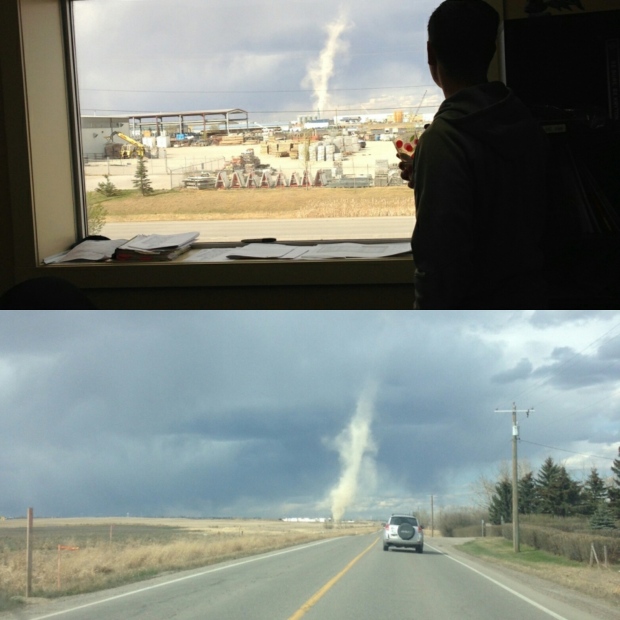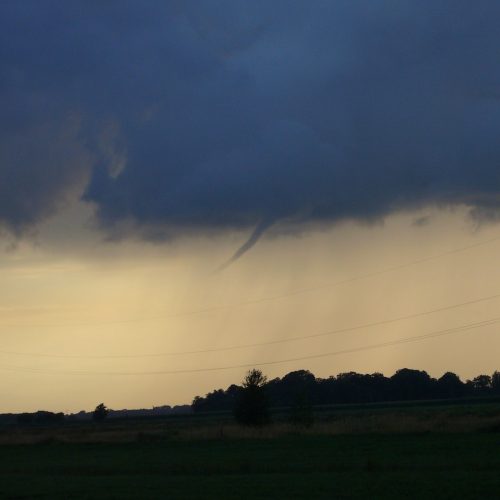It’s only April, but Southern Albertans got their first taste of the summer storm season this week.
Environment Canada has confirmed a landspout tornado formed east of Calgary on Wednesday afternoon — the first of the tornado season for Alberta and the Prairies.
It happened near the intersection of Highway 1 and Stoney Tr. N.E. at approximately 3:50 p.m.
“The wind was blowing really loud. It was scary and beautiful at the same time,” said Sherwin Moseley, who pulled over to film the striking weather event.
He told CBC News that if he been driving his 4WD vehicle, he would have gotten closer.
“I wanted to go closer, but I didn’t drive my SUV that day — I was driving a car and I would have had to go off-road to get closer.”
It’s probably a good thing that Moseley kept his distance.
While landspout tornadoes are not powerful enough to send you to the Land of Oz — they’re not exactly safe.
“They could toss you around a bit,” said Dan Kulak, a meteorologist with Environment Canada in Edmonton.
“There have been instances of these events with wind speeds in excess of 100 km/h on a very, very local scale. So you have to respect these things.”
On average, Alberta gets 15 tornadoes a year — but only had seven in 2015.
According to Environment Canada, having a twister touch down in April is not unheard of — but it is earlier than usual.
Tornadoes generally start appearing in May and peak in July.
Landspout tornadoes vs. dust devils
Environment Canada has also confirmed that two dust devils formed on April 13 — the first occurred near Balzac and the second happened on the Siksika First Nation, near Arrowwood.
Dust devils and landspouts are sudden, circulating columns of air that suck up dust.
“Air rises when it’s being heated from the sun and it stretches vertically,” Kulak said. It’s like a figure skater pulling their arms in. If they have their arms out they’re going slow and if they spin and they pull their arms in, they speed up.”
A landspout is considered a tornado because it makes contact with both the clouds and the surface of the ground.
Dust devils are whirlwinds that take shape from the ground up because of contrasts in air temperature.
Kulak said these kind of weather phenomena happen all the time, but are only visible to the naked eye when conditions are warm, dry and dusty.
By Danielle Nerman, CBC News





